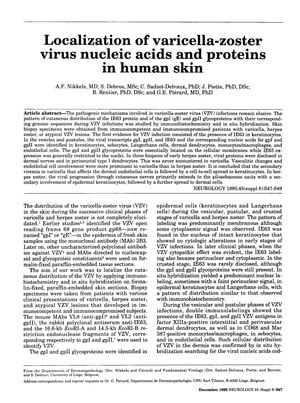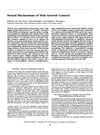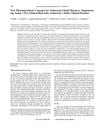Localization of Varicella-Zoster Virus Nucleic Acids and Proteins in Human Skin
December 1995
in “
Neurology
”

TLDR The research found that chickenpox virus spreads in skin through blood then to skin cells, while shingles virus moves from nerves to hair follicle areas before infecting skin cells.
The study investigated the distribution of varicella-zoster virus (VZV) in human skin during chickenpox and shingles by analyzing skin biopsy specimens from both immunocompetent and immunocompromised patients. Using immunohistochemistry and in situ hybridization, the researchers detected VZV nucleic acids and proteins, finding that the IE63 protein was the first sign of VZV infection in keratinocytes. They observed viral transcripts and nucleic acids for gpl and gpII in various skin cells within vesicles and pustules. The study concluded that during chickenpox, the virus affects dermal endothelial cells through secondary viremia and then spreads to keratinocytes, while in shingles, VZV spreads from cutaneous nerves to pilosebaceous units before reaching epidermal keratinocytes and dermal cells, indicating that the nerve fiber network around pilosebaceous units serves as a key pathway for the virus to reach the skin.




